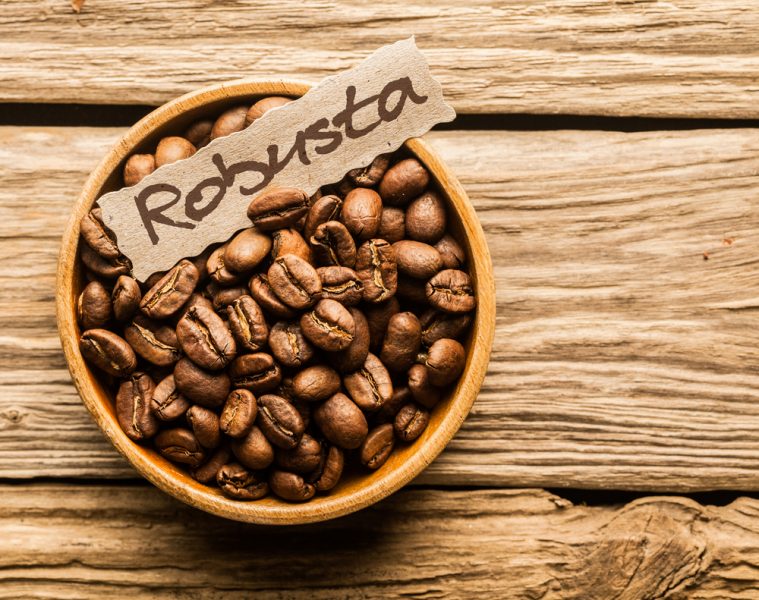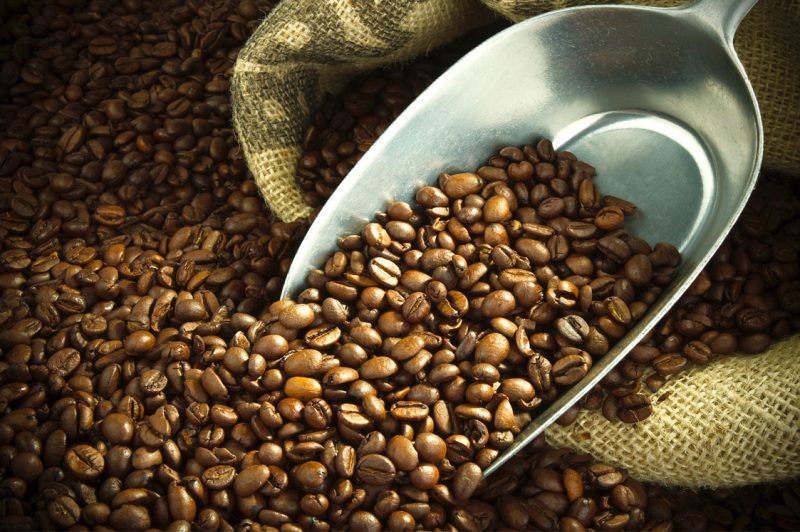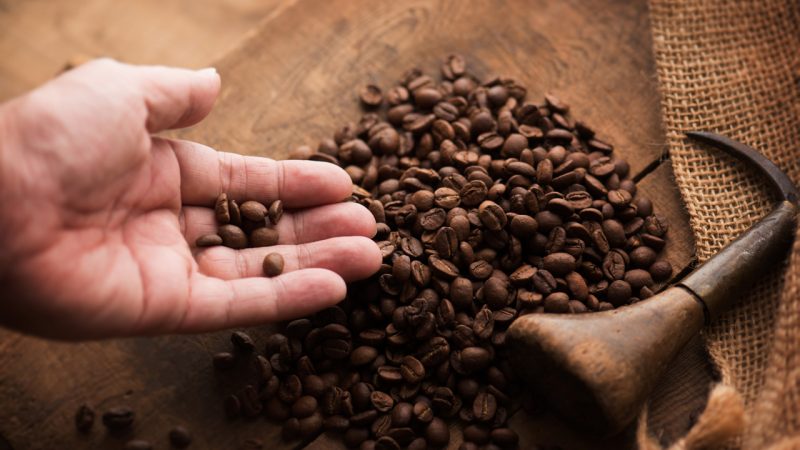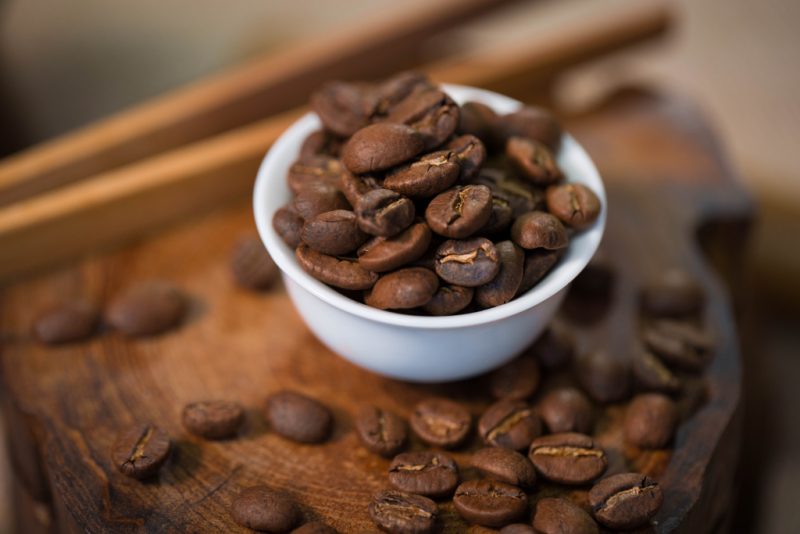Robusta coffee is considered the next most popular after arabica. He has a rather bitter taste, which is why he is often consumed in a mix with other varieties to level bitterness. Many coffee lovers are unlikely to know all the differences between these two types, since a large mass of people mostly drink their varietal mixes.
Material Content:
Robusta - what kind of coffee is it?
Experts note that the taste of this coffee is far from perfect, because it gives bitterness. The drink from such fruits is sharp, watery and very strong due to the large amount of caffeine. Therefore, it is often used only for the preparation of instant drinks, as this allows you to remove a specific aftertaste.

However, there are many admirers of such coffee in its pure form, since 100 m of the drink contains a “medical” dose of caffeine.
But in cultivation, this species is not without advantages: it is not susceptible to many diseases, is not demanding on conditions, temperature and soil composition, does not attract pests. Therefore, it costs much cheaper compared to elite varieties. It is most often used for the manufacture of commercial coffee blends and instant coffee. Robusta production occupies more than 20% of the global volume.
Growing conditions and origin
For the first time, a coffee tree of this species was discovered only in 1860 in Uganda, but at first few people were interested in it. But at the beginning of the twentieth century, robusta was widespread, since the main plantations of arabica were destroyed by rust. Therefore, in 1900, seedlings were first brought to Java and began to be grown on an industrial scale, as it is resistant to diseases and brings large yields. In addition, it is very easily propagated by cuttings.Now Vietnam is considered the largest producer of robusta.

These coffee trees, between 1.5 and 9 m high, grow in equatorial African and Asian forests. Translated by “robusta” means “strong”, “powerful”, “strong”, “reliable”, as this species grows in such conditions in which arabica simply cannot survive. At temperatures below +10, the tree dies, so they are grown only in warm countries.
In the wild, these trees can reach a height of 10 m, but they are pruned on plantations, forming a low tree or bush for the convenience of harvesting. Fruiting begins at the age of 2.5 -3 years.
Description of Robusta coffee
The leaves of the plants are large, the flowers are white with a pinkish tinge. The grains are rounded, greenish brown. The fruits ripen for a long time - at least 10 months, while their diameter is 6-7 mm larger compared to arabica. In 12 months, more than 12 crops can be harvested from one plantation, since all the trees bloom and bear fruit unevenly, so the fruits ripen year-round. They harvest by hand, only in some regions of Brazil the terrain allows the use of technology.

It is difficult to drink such coffee in its pure form.
But in combination with other varieties it is possible. Classic Italian mixes are made from 80% Arabica and 20% Robusta. It is believed that the amount of robusta more than 20% is evidence that during production they tried to save on product.
Composition and taste

Robusta contains many useful compounds and elements:
- caffeine;
- minerals;
- amino acids;
- cellulose;
- vitamins
- aromatic oils;
- acids;
- monosaccharides.
Calorie content of the product is over 330 kcal. Proteins make up 16% of the total, fats - 39%, carbohydrates - 35%.

The taste and aromatic qualities of robusta are not even nearby in comparison with Arabica. It is characterized by a rather earthy taste with sourness, astringency, stiffness, unpleasant bitterness and a specific pungent odor. But as part of other soluble mixtures, it gives the drink sometimes the missing qualities - velvety, tartness, tartness and piquant taste. To prepare a strong espresso, it is necessary, since it is Robusta that gives the drink to everyone's favorite thick and lush foam.
The sensible use of coffee increases the general tone of the body, makes a person vigorous and energetic, saturates with antioxidants, raises the mood and performance, relieves spasm of blood vessels.
Types of Robusta Coffee
Robusta coffee is sold ground or in beans.

The best varieties:
- Nanu;
- Qilu;
- Congensis;
- Conigliondu Brazil;
- Java Ineak.
Grinding methods can be different:
- coarse grinding is most often used for coffee makers;
- the average is considered universal;
- thin is the best suited for making coffee "in Turkish".
All these varieties can be used as power engineers of natural origin.
Coffee beans can be stored in a sealed container for a year, ground - no more than 3 weeks. And it’s even better to grind the grains immediately before preparation: this will make it possible to fully enjoy the aroma of coffee.
What is the difference between Robusta and Arabica
So, what is the difference between Robusta coffee beans and Arabica?
| Parameter | Robusta | Arabica |
|---|---|---|
| Homeland | Congo | Ethiopia |
| Growing conditions | plains (200-700 m above sea level) | low mountains (1100-2500 m above sea level) |
| Appearance | vigorous evergreen shrub | wood |
| Ideal growing temperature | +24…+29 | +16…+24 |
| Disease resistance | high | low |
| Grain shape | round | oval |
| Taste | bitter and rude, neutral to sharp | rich and deep, ranging from sweet and soft to tart and sharp depending on the variety and method of processing |
| Caffeine content | 1,5-2,7 % | 0,6-1,5 % |
| Aromatic Oil Content | up to 8% | before 18 % |
| Sugar content | 5 % | 8 % |
| Type of processing | dry | wet |
| Volume of production | over 20% | about 75% |
| Productivity | high | low |
| Scope of application | for the production of instant coffee or as additives | as a monosort or in mixtures |
Arabica is considered an elite type of coffee and costs accordingly, so not everyone can afford to drink it in its pure form. And mixtures with robusta are cheaper and at the same time have a pretty good taste.

Both types of coffee complement each other perfectly, therefore, from the right combination, the most famous and beloved coffee blends are born:
- Espresso - Strong morning coffee with a noticeable bitterness, firm body, minimal acidity and high caffeine content. The ratio of Arabica and Robusta is approximately 50 to 50%. Suitable for people who need to quickly increase their performance in the morning.
- Velveteen - An interesting mix with a dense, velvety body and moderate acidity. The drink has fruity and nutty notes and a persistent aftertaste. Consists of 90% Arabica of different varieties and 10% Robusta.
- Cream melange - a blend of the best varieties. It has a mild balanced taste with creamy notes and light bitterness. Consists of 70% Arabica and 30% robusta of two varieties.
- Chocolate - A rather expensive mix with a velvety aftertaste. It has a characteristic bitter-astringent taste of chocolate with subtle wine notes. The aroma is sweetish, non-intense with a slight bitterness. The finish is pleasant. Contains no additives, the ratio of Arabica and Robusta is 85 and 15%.
Therefore, do not neglect this type of coffee. Thousands of people invest time and hands in its production, and it also occupies an important place in the coffee industry.












